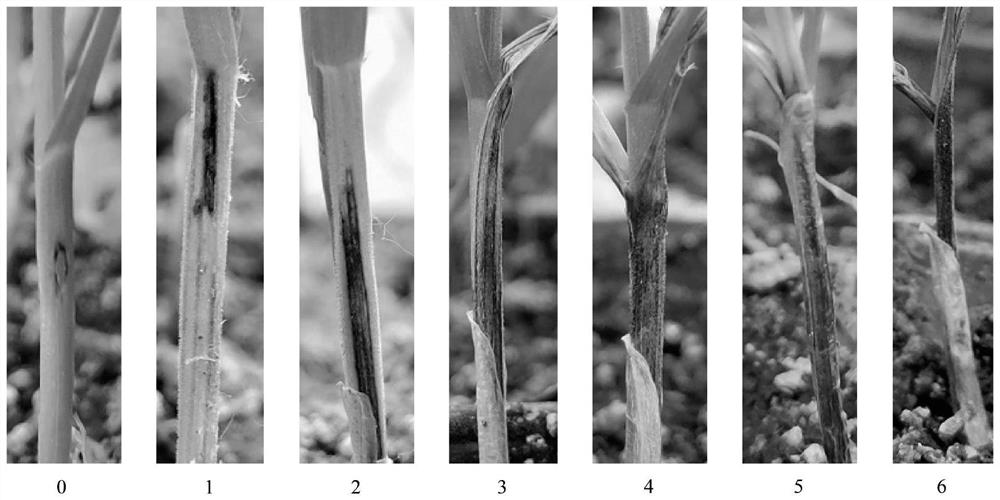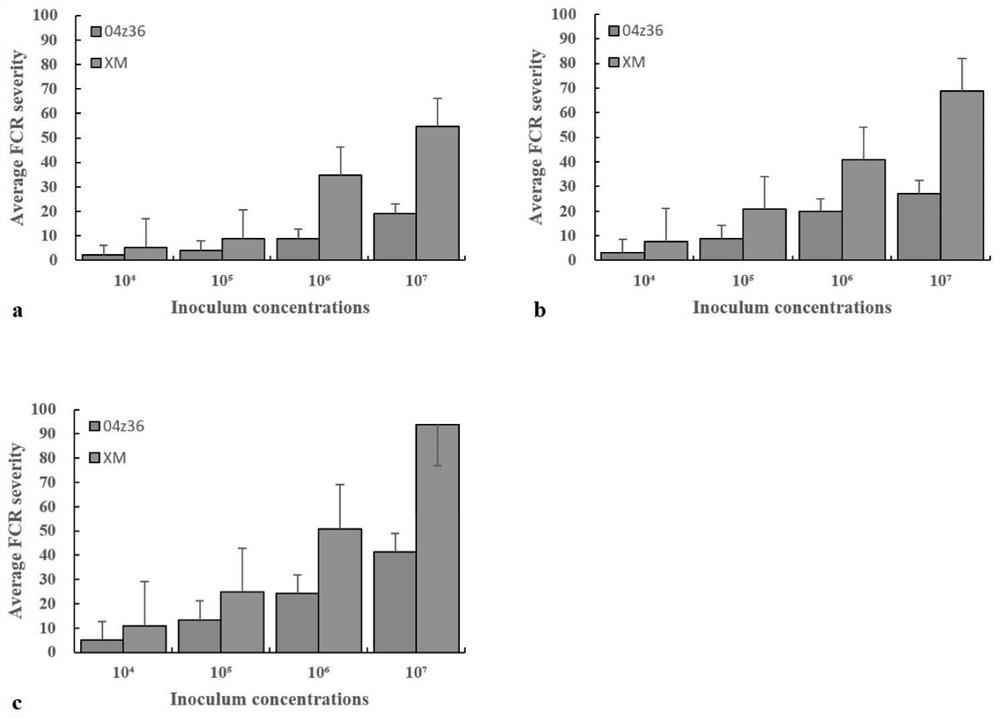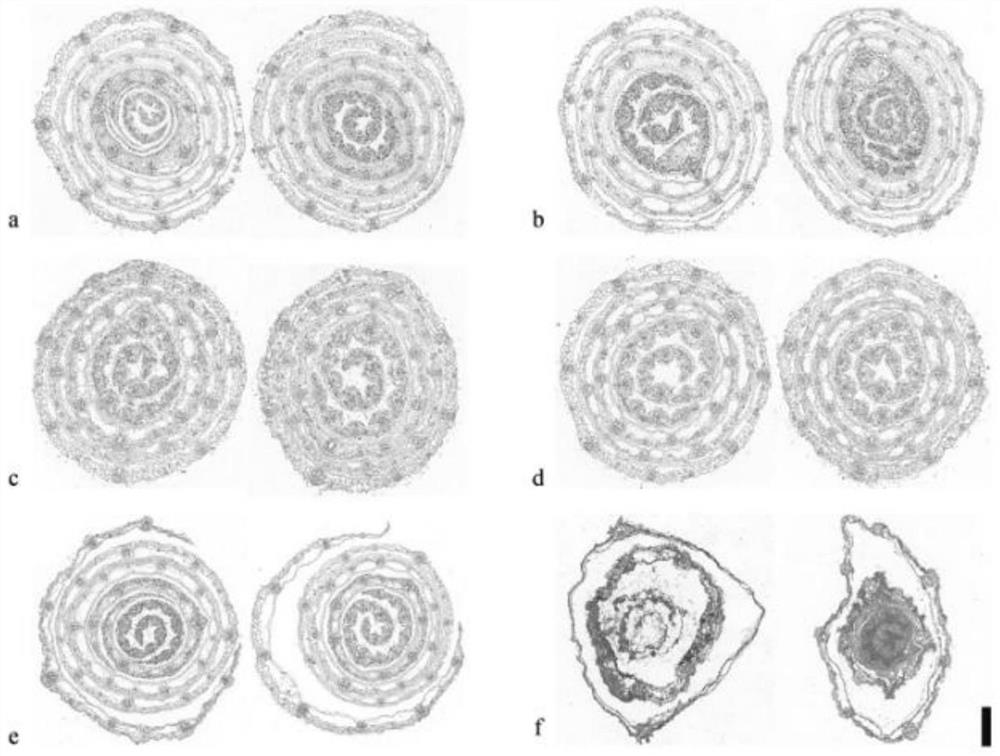Wheat basal stem rot resistance identification method
An identification method and stem base rot technology are applied in the field of wheat stem base rot resistance identification, which can solve the problems affecting FCR resistance and long cycle.
- Summary
- Abstract
- Description
- Claims
- Application Information
AI Technical Summary
Problems solved by technology
Method used
Image
Examples
preparation example Construction
[0030] The preparation method of the spore suspension of the present invention preferably comprises: after cultivating the spores of the Fusarium with carboxymethylcellulose medium (CMC), mixing with Tween 20 to obtain the spore suspension; The volume of Tween 20 was 0.5% of the volume of the spore suspension.
[0031] The present invention is not particularly limited to the type of Fusarium, such as the Fusarium pseudogamine isolate WZ-8A used in the examples (Jin, Identification of a novel genomic region associated resistance to Fusarium crown rot in wheat.2020 ), but it cannot only be regarded as the entire protection scope of the present invention. In the embodiment of the present invention, the WZ-8A is preferably cultured on a 1 / 2 potato dextrose agar plate at room temperature for 5 to 7 days. When the white hyphae grow on the plate and show red pigmentation, the Take out 10 pieces of 6 mm × 4 mm medium with mycelia, and then transfer them to an Erlenmeyer flask contain...
Embodiment 1
[0043] 1. Plant material
[0044] The best identification method was determined using wheat cultivars 04zhong 36 (04z36) and Xinmai 26 (XM) with moderate resistance to FCR and high susceptibility to FCR. Using 92 hexaploid wheat lines derived from wild emmer wheat as materials, the validity and repeatability of the optimized identification method were verified.
[0045] 2. Preparation of inoculum solution
[0046] Fusarium graminearum isolate WZ-8A, a dominant pathogenic species in the Huanghuai wheat region of my country, provided by Professor Li Hong and Li Honglian from the Plant Protection College of Henan Agricultural University, was used for FCR inoculation. The isolates were grown on 1 / 2 strength potato dextrose agar plates for 5-7 days at room temperature. When white hyphae grow on the plate and show red pigmentation at the bottom, remove 10 pieces of 6 mm × 4 mm medium with mycelium from the plate, and then transfer it to a medium containing 400 mL of carboxymethylc...
PUM
 Login to View More
Login to View More Abstract
Description
Claims
Application Information
 Login to View More
Login to View More - R&D
- Intellectual Property
- Life Sciences
- Materials
- Tech Scout
- Unparalleled Data Quality
- Higher Quality Content
- 60% Fewer Hallucinations
Browse by: Latest US Patents, China's latest patents, Technical Efficacy Thesaurus, Application Domain, Technology Topic, Popular Technical Reports.
© 2025 PatSnap. All rights reserved.Legal|Privacy policy|Modern Slavery Act Transparency Statement|Sitemap|About US| Contact US: help@patsnap.com



